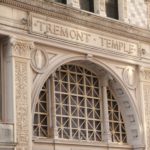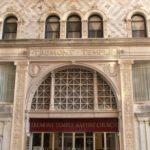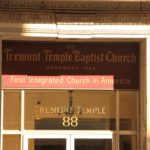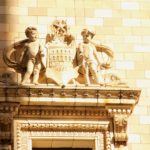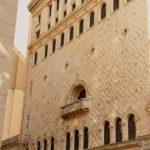
Tremont Temple
Boston, MA 02108 United States
The Tremont Temple was founded on the principle that worship should be free. It was begun by the Free Church Baptists, who opposed what was then a common practice of charging “rent” for space in a church pew. In 1843, the Baptists bought the Tremont Theater, which had been built sixteen years earlier but never turned a profit as a playhouse. By using parts of the church as commercial space, and opening the theater for public events, the Tremont Temple was able to remain free, and therefore had the first integrated congregation in the country. The first two tenets of the church made these aims explicit:
- …to make continued efforts to supply every human being with the privileges of Gospel…
- …All who practice slavery or justify it, shall be excluded from the church and its communion…
In its capacity as a theater, the Tremont Temple brought notable preachers, speakers, and spectacles to Boston. Abraham Lincoln addressed a crowd in the Tremont Temple before his presidency. In 1856, Ralph Waldo Emerson gave a speech praising John Brown there, part of a campaign to support Brown’s children following his hanging, in which Emerson worked with Henry David Thoreau and Bronson Alcott. Frederick Douglass, abolitionist and freed slave, spoke there on “the Great Question of the Age, ‘How Can American Slavery Be Abolished?’” Not long after, in 1863, the Emancipation Proclamation was read in the church for the first time in Boston. Charles Dickens gave his first public reading in the United States in the Tremont Temple in December of 1867, at which he read selections from “A Christmas Carol,” and “The Pickwick Papers” (he had performed the former for a private gathering of the Saturday Club in the adjacent Omni Parker House Hotel shortly before). Harriet Beecher Stowe read from Uncle Tom’s Cabin, acting out the various characters for “Boston’s literati,” who reportedly stood and leaned forward to hear her.
The Tremont Temple suffered serious damage from fires in 1852 and 1879. After a third in 1893, the current structure was built by architect Clarence Blackall, who would later design the Colonial Theater. The Tremont Temple was reopened in 1896, and has remained an operational Baptist church since.
Upcoming Events
- There were no results found.
Events List Navigation
Events List Navigation
Did You Know?
Certain books were “banned in Boston” at least as far back as 1651, when one William Pynchon wrote a book criticizing Puritanism.
